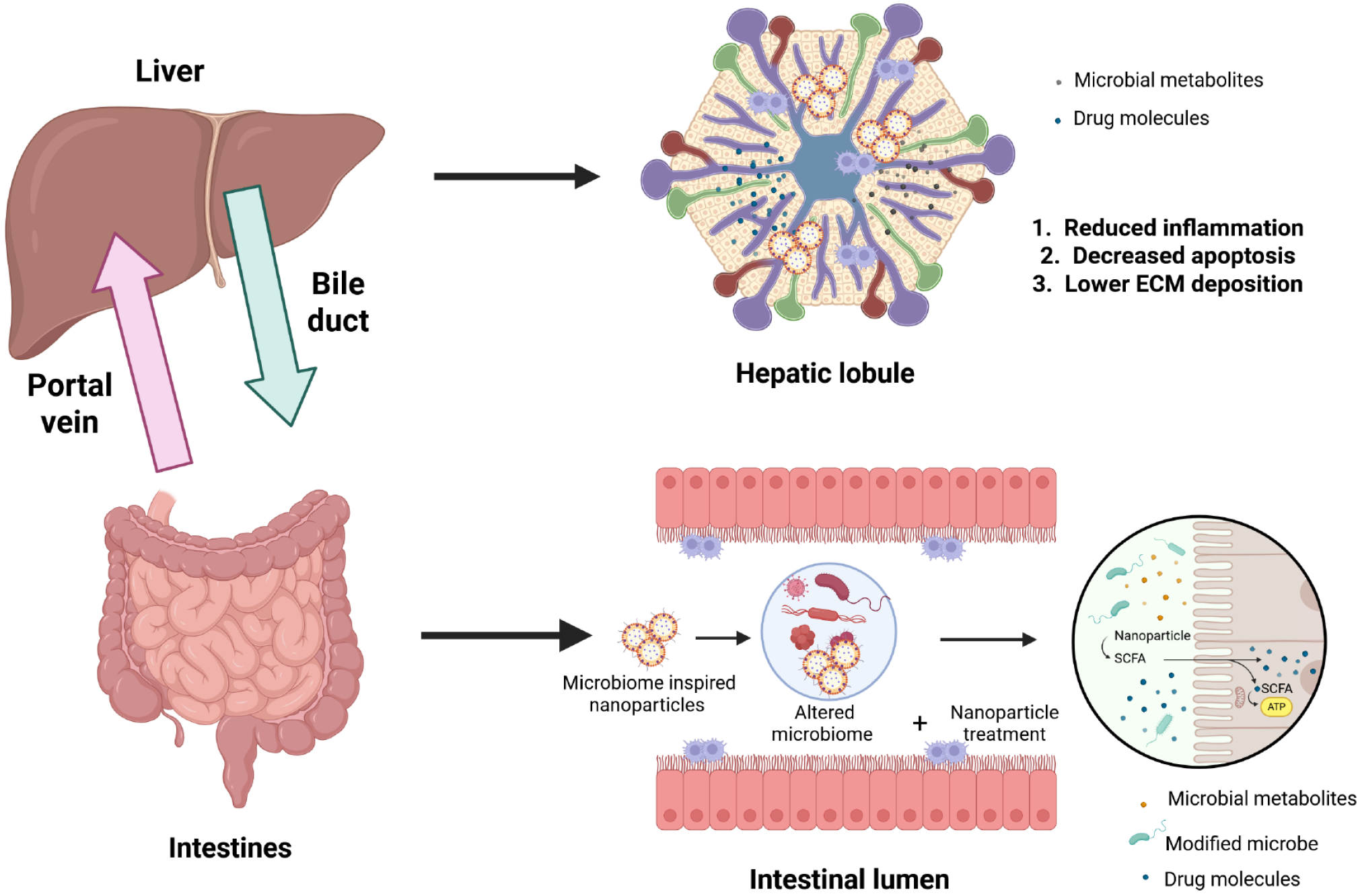Copyright
©The Author(s) 2025.
World J Gastroenterol. Jul 21, 2025; 31(27): 109105
Published online Jul 21, 2025. doi: 10.3748/wjg.v31.i27.109105
Published online Jul 21, 2025. doi: 10.3748/wjg.v31.i27.109105
Figure 3 Mechanism of action of orally delivered microbiome nanocarriers for the treatment of liver diseases.
The enterohepatic circulation plays an important role in the mobility of nanoparticles, wherein the portal vein circulates nanoparticles and their payload to the liver, and the metabolites may then circle back again from the liver to the intestine via the biliary system. In the intestine, microbiome-inspired nanoparticles may potentially affect the microbiome by modifying the microbiome profile, by delivering pharmacologically active microbial metabolites (such as short chain fatty acids) or molecules. Within the liver, liposomes may reduce inflammation by acting on immune cells such as Kupffer cells, may reduce apoptosis of hepatocytes, and/or may reduce the deposition of extracellular matrix proteins including collagen, elastin, and fibronectin. ECM: Extracellular matrix; SCFA: Short chain fatty acids. Created with a license from BioRender.com.
- Citation: Khurana A, Hartmann P. Gut microbiome-specific nanoparticle-based therapeutics for liver diseases. World J Gastroenterol 2025; 31(27): 109105
- URL: https://www.wjgnet.com/1007-9327/full/v31/i27/109105.htm
- DOI: https://dx.doi.org/10.3748/wjg.v31.i27.109105









